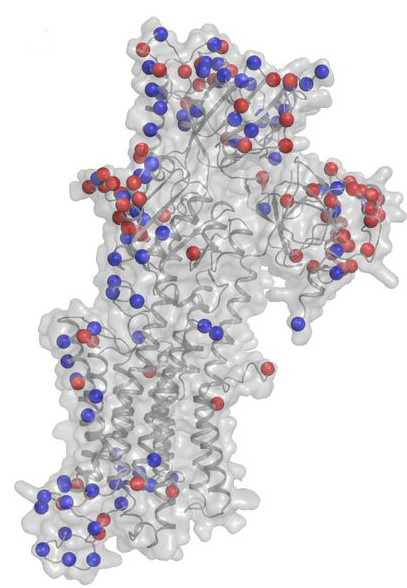New insights into calcium transport may help develop new drugs
A normal function of the heart and nerve system is, among other things, dependent on proper regulation of calcium in the cells. This process depends on the proper functioning of the calcium pump. New studies of the calcium pump structure give new insight into this process, which may help with the development of new drugs for treatment such as Parkinson's disease and heart failure.

The calcium pump – called the sarco/endoplasmic reticulum Ca2+-ATPase (SERCA) – modulates intracellular calcium levels by actively transporting Ca2+ ions from the cytoplasm into the sarco/endoplasmic reticulum. The heart-specific isoform (SERCA2a) is essential for cardiac muscle contraction; SERCA2a dysfunction has been associated with heart failure and restoration of its activity presents a viable strategy for restoring cardiac performance. Meanwhile, the emerging technique of neutron macromolecular crystallography (NMX) has the potential to reveal new insights into the SERCA ion transport mechanism by mapping hydrogen positions within the protein itself, providing new knowledge that can help us to better understand its activities in both normal and diseased states. This in turn can aid development of new, high-performance drugs targeting SERCA in novel therapeutic strategies: increasing SERCA activity in Parkinson disease neurons for example increases endoplasmic reticulum (ER) calcium levels and rescues neurons from ER stress-induced death.
Two recent publications by the Nissen group guide us towards a more detailed understanding of SERCA function through the production of new protein structures. In an article published in the EMBO Journal, the first two X-ray structures of the SERCA2a isoform are presented along with how this information helps explain kinetic and regulatory differences between SERCA2a and its skeletal muscle counterpart SERCA1a. The other article, published within Acta Crystallographica presents work aimed towards obtaining the first NMX structure of SERCA while also presenting a new room-temperature X-ray structure of SERCA1a which confirms findings of the previous cryogenic structure.
Taken together, these two articles lay the foundation for future investigations into SERCA that will provide important insight into how calcium regulation and signalling may be modulated to restore proper cardiac and neurophysiological function. In the case of the SERCA2a study, structures of the enzyme in complex with small molecule regulators may now be pursued, which combined with a greater knowledge of unique properties of the cardiac-specific isoform, will help in the design of specific and effective SERCA2a modulators for the treatment of heart failure.
In the second article, the groundwork presented will be built upon to produce the first neutron structure of SERCA, which will offer unique insight into its transport mechanism and may guide development of new, high-performance SERCA modulators – potentially opening new avenues for the treatment of conditions such as Parkinson’s disease.
Structures of the heart specific SERCA2a Ca2+?ATPase - The EMBO Journal
Aljona Sitsel, Joren De Raeymaecker, Nikolaj Düring Drachmann, Rita Derua, SusanneSmaardijk, Jacob Lauwring Andersen, Ilse Vandecaetsbeek, Jialin Chen, Marc De Maeyer; Etienne Waelkens, Claus Olesen, Peter Vangheluwe, Poul Nissen
Membrane-protein crystals for neutron diffraction - Acta Cryst.
T. L.-M. Sørensen, S. J. Hjorth-Jensen, E. Oksanen, J. L. Andersen, C. Olesen, J. V. Møller and P. Nissen
Exploring strategies for growing large membrane-protein crystals and the challenges of using neutron macromolecular crystallography to locate H atoms.
doi.org/10.1107/S2059798318012561
For further information, please contact
Professor Poul Nissen
Department of Molecular Biology and Genetics
Aarhus University, Denmark
pn@mbg.au.dk - +45 2899 2295
